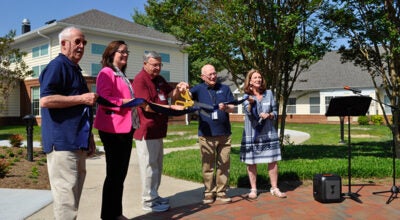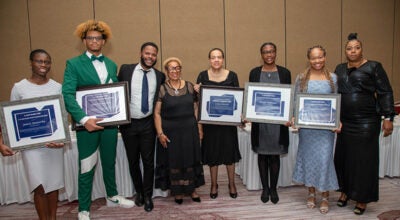Group awards STEM grant
Published 9:49 pm Saturday, March 23, 2013
The Suffolk Education Foundation has announced a donation of $23,000 to Suffolk Public Schools’ new Science, Technology, Engineering and Math program.
The funds will “help to accelerate the implementation of our … initiative by allowing us to provide hands-on educational opportunities at a greater level for all our students,” school district Deputy Superintendent Jacqueline Chavis stated in a foundation news release.
“We are very appreciative of this support from the Suffolk Education Foundation and excited about our students and the community we benefit.
“The foundation continues to support the efforts of Suffolk Public Schools in providing quality educational experiences for our children.”
The STEM initiative will work across the district’s schools, taking an interdisciplinary approach to impact all students from kindergarten through 12th grade.
“STEM skills and concepts will focus student learning on the ability to use, manage, assess and understand technology as it relates to the everyday application of English, science, mathematics and social science,” the release states. “STEM integration will occur through problem solving, discovery and explorative approaches to learning.”
The initiative will target existing STEM activities in schools and focus on training instructional staff, according to the release.
Objectives involve preparing for new, more rigorous Standards of Leaning in math and science, challenging students with more advanced opportunities, and reducing achievement gaps between genders, races, levels of advantage and disabled students.
The program will also seek to minimize the amount of remediation necessary, promote skills for the global economy, and enhance STEM literacy and critical-thinking skills “to prepare students for high-demand, high-wage, and highly skilled careers.”
The outcome, according to the release, will involve “breaking down the barriers” between core academic subjects and technical education, between high school and postsecondary education, and between formal education and the workplace.
Another outcome will be to raise the aspirations of students and increase enrollment in postsecondary education for technical careers.
Explaining how objectives will be met, the news release states that math and science will be taught in an “interactive way,” teamwork will build student relationships, and higher-level critical thinking and problem-solving skills will be employed.
The program will seek to frame math and science curriculums in real-world settings involving job-specific and practical-living skills. Also, creativity and proficiency with technology will be encouraged.






